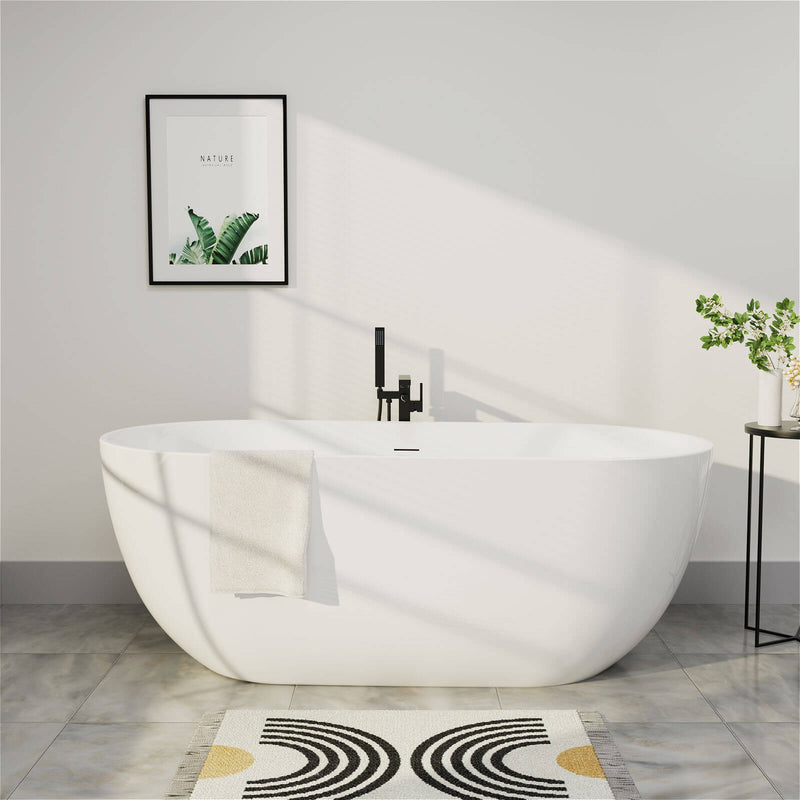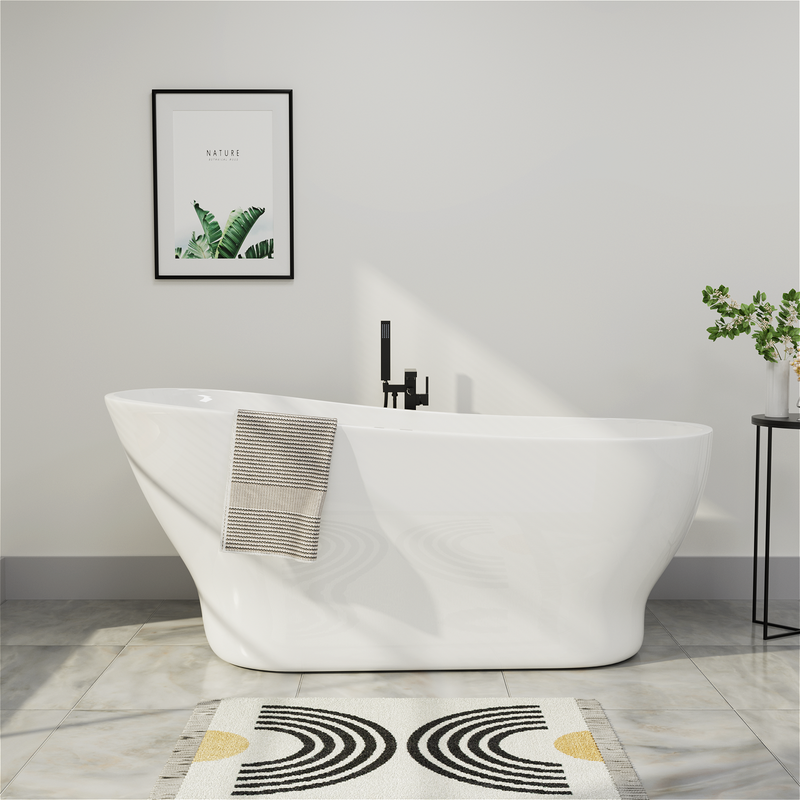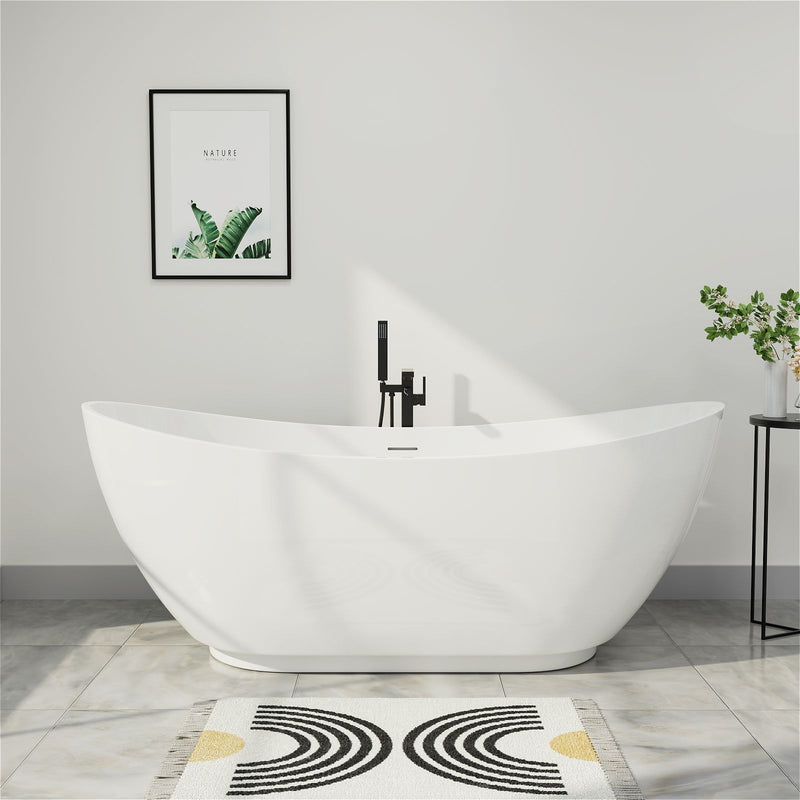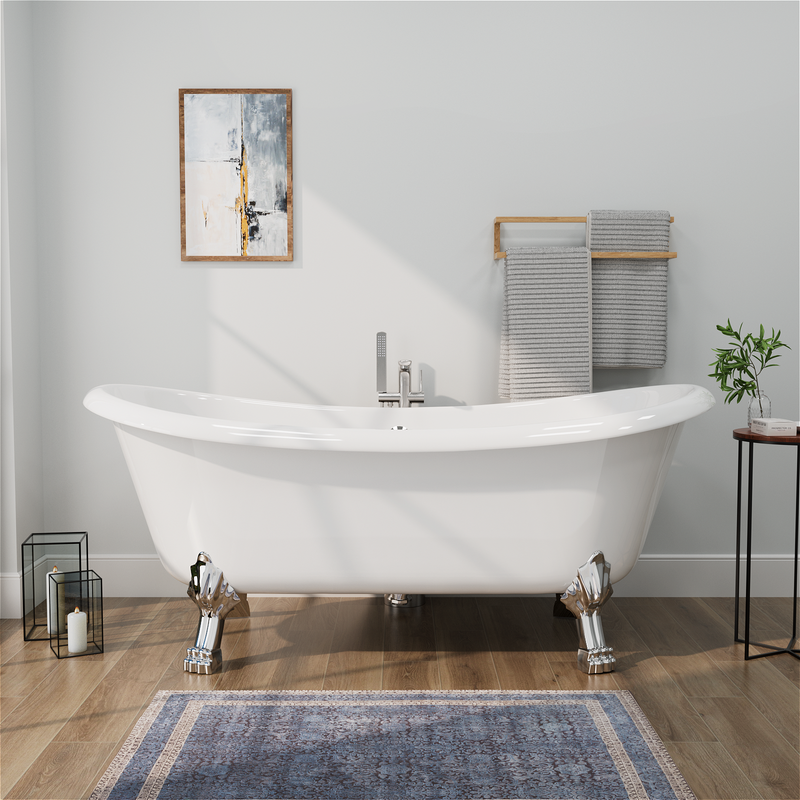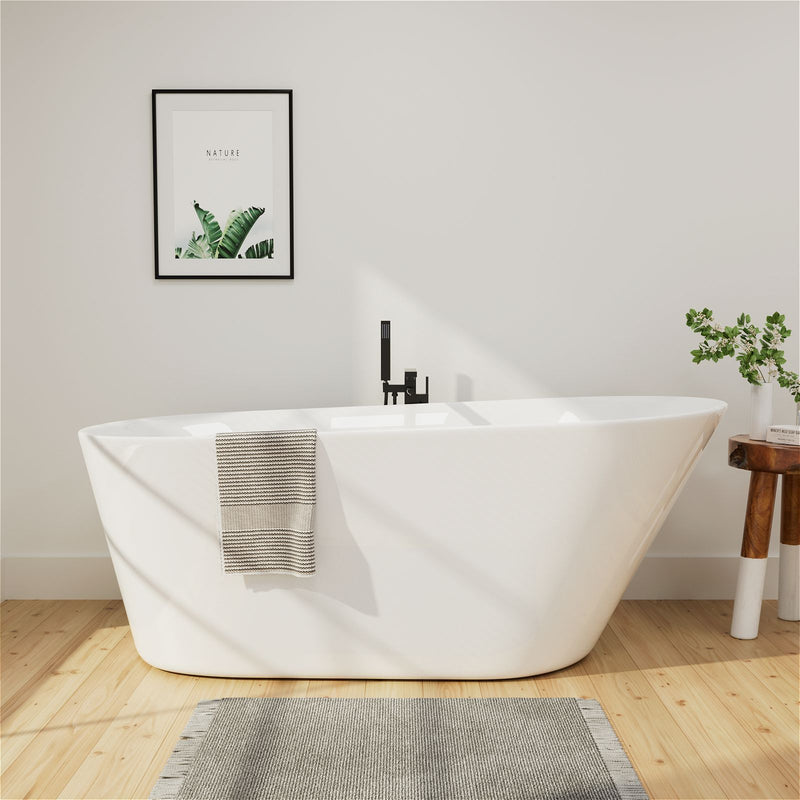Modern bathtubs, whether solid surface or acrylic, have 100% non-porous surfaces. This makes them extremely antibacterial and moisture-resistant. Although they have many similarities, solid surface and acrylic bathtubs differ in manufacturing process, density, thermal conductivity, appearance, and repairability. Their characteristics differentiate them from each other, and understanding these differences will help you decide which bathtub is better for your application.
What is an Acrylic Bathtub?
Acrylic bathtubs are a type of bathtub with an acrylic (PMMA) sheet as the surface and a glass fiber reinforced layer inside. Since its popularity in the 1970s, it has occupied more than 70% of the global household bathtub market share due to its lightness, flexible shape, and high cost performance.

Acrylic Bathtub Manufacturing Process
Acrylic sheet thermoforming: 3-5mm thick acrylic sheet is heated to 140℃ to soften and adsorbed on the mold to shape.
Fiberglass reinforcement: Resin is sprayed on the back and multiple layers of fiberglass cloth are laid to strengthen the structure.
Edge treatment: Install the anti-slip support frame after cutting and trimming.
Core features of Acrylic Bathtubs
Lightweight: The weight is only 50-100kg (cast iron bathtubs can reach more than 200kg).
Excellent thermal insulation: The thermal conductivity of acrylic is 0.2W/m·K, and the insulation time is 30% longer than that of metal bathtubs.
Diversity of shapes: It can be made into independent, embedded, massage bathtubs and other complex curved surfaces.
Economical: The price is only 1/3-1/2 of the solid surface bathtub.
Easy to scratch: The Mohs hardness is only level 2, and hard objects should be avoided when cleaning.
Limited temperature resistance: Long-term contact with hot water above 70℃ may cause local deformation.
What is a Solid Surface Bathtub?
A solid surface bathtub is a high-end bathtub material made of a mixture of mineral fillers (such as aluminum hydroxide) + resin. It was originally developed by DuPont in the 1960s and was originally used for kitchen countertops. Later, it was widely used in bathroom products due to its excellent performance.

Manufacturing Process of Solid Surface Bathtub
Raw material mixing: Mix mineral powder (aluminum hydroxide, quartz, etc.) with acrylic or polyester resin.
Casting: Pour the mixture into the mold and perform vacuum degassing to ensure that there are no bubbles.
Curing and polishing: After high-temperature curing, the surface is polished to form a smooth, non-porous texture.
Customized processing: Cutting, engraving, hot bending and other processes can be performed to achieve personalized design.
Core Features of Solid Surface Bathtub
Seamless integration: It can be seamlessly spliced with countertops and walls to avoid mold growth.
High hardness and scratch resistance: Mohs hardness can reach 3-4, which is better than ordinary acrylic.
High temperature resistance and no deformation: It can withstand hot water above 80℃ and will not turn yellow after long-term use.
Repairability: Minor scratches can be restored to new by sandpaper polishing.
Antibacterial and mildew-proof: Dense and non-porous structure inhibits bacterial growth.
Solid Surface vs. Acrylic Tub: Key Differences
Installation and Weight
Solid Surface Tub: Solid surface tubs are heavier than acrylic tubs, giving the bathroom a solid, solid feel. Due to their weight, they may require more structural support when installed, which can increase installation costs.
Acrylic Tub: Acrylic tubs are lighter, easier to handle, and quicker and more affordable to install. Acrylic tubs are lighter and fit a variety of bathroom layouts, without the need for additional floor support.
Aesthetics and Finishes
Solid Surface Tub: Available in luxurious matte or semi-gloss finishes, solid surface tubs have a sophisticated look that adds elegance to any bathroom. Their colors and textures are durable, ensuring the tub will always be a striking focal point. Their custom options for shape, color, and finish make them suitable for any design style.
Acrylic Tub: Acrylic tubs are available in a variety of colors and offer a polished, shiny finish. They add a bright, clean look to the bathroom and are suitable for a variety of settings, although they may not have the same upscale appeal as solid surface tubs. Over time, acrylic tubs may lose their original shine due to scratches and fading.
Durability and Longevity
Solid Surface Bathtubs: Solid surface bathtubs are extremely durable and have excellent resistance to scratches, stains, and impacts. They are able to withstand daily use without fading, and can even polish away minor scratches to restore the bathtub's surface to like-new condition, making them an ideal long-term investment choice.
Acrylic Bathtubs: Acrylic bathtubs are less durable and are more susceptible to scratches and discoloration. While they can withstand general use, they are more likely to show signs of wear and tear than solid surface bathtubs. The glossy surface of acrylic bathtubs is more difficult to maintain, especially if exposed to harsh cleaning agents.
Heat Retention and Comfort
Solid Surface Bathtubs: Solid surface bathtubs are known for their excellent heat retention properties, which can keep the water warm for a long time, enhancing the comfort of long and relaxing baths. This is a key advantage for those who like to soak in the bath and do not want to heat the water frequently.
Acrylic Bathtubs: Acrylic bathtubs cool down faster because the material is less effective at retaining heat. While acrylic bathtubs are suitable for short baths, they may be a limitation for those who value long-term heat retention.
Cost and Value
Solid Surface Bathtubs: Solid surface bathtubs are generally priced higher due to their premium materials, durability, and aesthetics. While the initial cost may be higher, their long-lasting quality and minimal maintenance requirements make them a worthwhile investment for those seeking elegance and durability.
Acrylic Bathtubs: Acrylic bathtubs are more affordable and a popular choice for budget-conscious homeowners. While acrylic bathtubs may not last as long as solid surface tubs, their lower upfront cost and ease of installation make them ideal for those looking for a balance between price and functionality.
Maintenance and Care
Solid Surface Bathtubs: Solid surface bathtubs are easy to clean and maintain. Their non-porous surface effectively resists stains and bacteria. Routine cleaning with mild soap and water is usually all that is needed. If minor scratches occur, they can be sanded and polished to restore their original finish.
Acrylic Bathtubs: Acrylic bathtubs are relatively low maintenance, but they are more susceptible to stains and may require a gentler cleaning method to avoid scratches. Using non-abrasive cleaners and avoiding harsh chemicals can help preserve the appearance of the tub, but deeper scratches may be more difficult to repair.
Conclusion
Choosing the right tub material is critical to the success of a bathroom renovation. When choosing between a solid surface tub and an acrylic tub, homeowners should carefully consider factors such as durability, cost, maintenance, usage, and style preferences. Consulting with a bathroom professional can provide valuable insight and guidance to help homeowners make an informed decision based on their unique needs and preferences. By weighing the pros and cons of each tub material and prioritizing long-term satisfaction, homeowners can create a bathroom space that is both functional and beautiful, thereby enhancing overall enjoyment and the value of their home.

